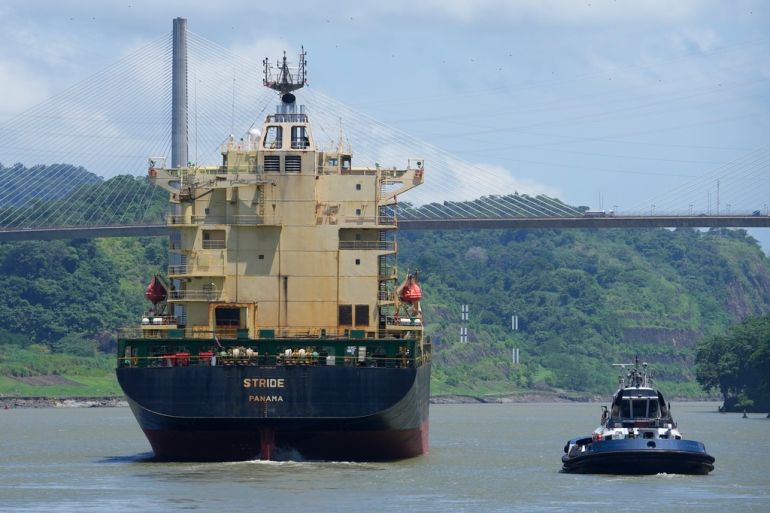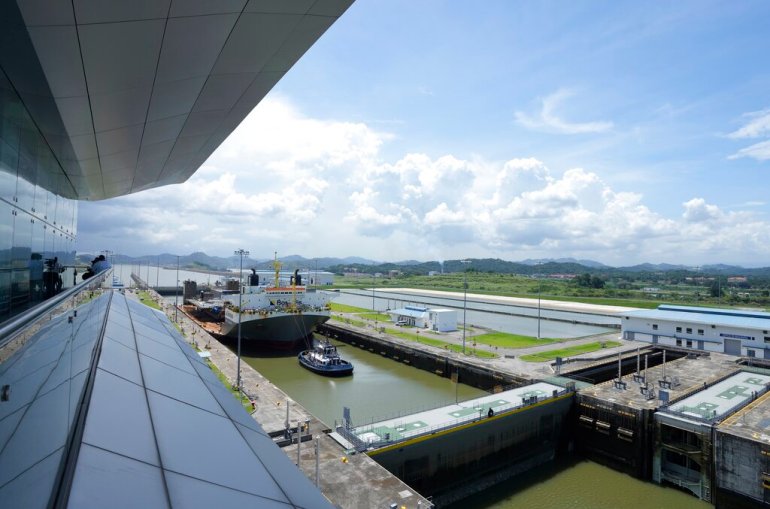Panama Canal announces prolonged transit restrictions due to drought
Low water levels have created a backlog of cargo vessels in one of the world’s key maritime shipping passageways.

The Panama Canal, a vital passageway that moves 6 percent of the world’s maritime commerce, will extend transit restrictions due to drought-induced low water levels.
Canal authorities first announced restrictions this year, creating a backlog of vessels waiting to cross. But on Thursday, those restrictions were extended for at least 10 additional months.
Keep reading
list of 3 itemsPanama’s ex-president sentenced to 10 years for money laundering
What is behind the largest protests in Panama in years?
“We are currently seeing an increase in arrivals. It is peak season as December is approaching, so merchandise for Christmas is moving quickly,” the canal’s deputy administrator, Ilya Espino, said in an interview.
The Panama Canal plays a key role in maritime transport by allowing ships to cross with relative ease between the Atlantic and Pacific, but it could remain at diminished capacity for up to a year due to its current shallow water levels.
The curbs have caused some ship owners to lighten their cargo loads or seek alternate routes, and Espino has encouraged vessel owners to make reservations ahead of time to help avoid delays. The backlog currently sits at about 115 vessels, according to official data.

Authorities hope the restrictions will help them hold out until the next rainy season because a lack of rainwater strains the task of moving ships through a complicated series of locks that act as water elevators.
The 80km (50-mile) passageway largely serves vessels from the United States, China and Japan with an average of 32 ships crossing each day. That number is down from 40 a day in 2022.
Waiting times to enter, typically from three to five days, are now up to 11 days on average.
A project to expand the canal was completed in 2016 and was celebrated as a victory for commercial traffic between North America and Asia.
This week, Panamanian President Laurentino Cortizo rebuked Colombian President Gustavo Petro for stating that the canal is closed due to drought.
“We have a restriction in Panama as we have had on other occasions, but it is not true that the Panama Canal is closed,” Cortizo said.